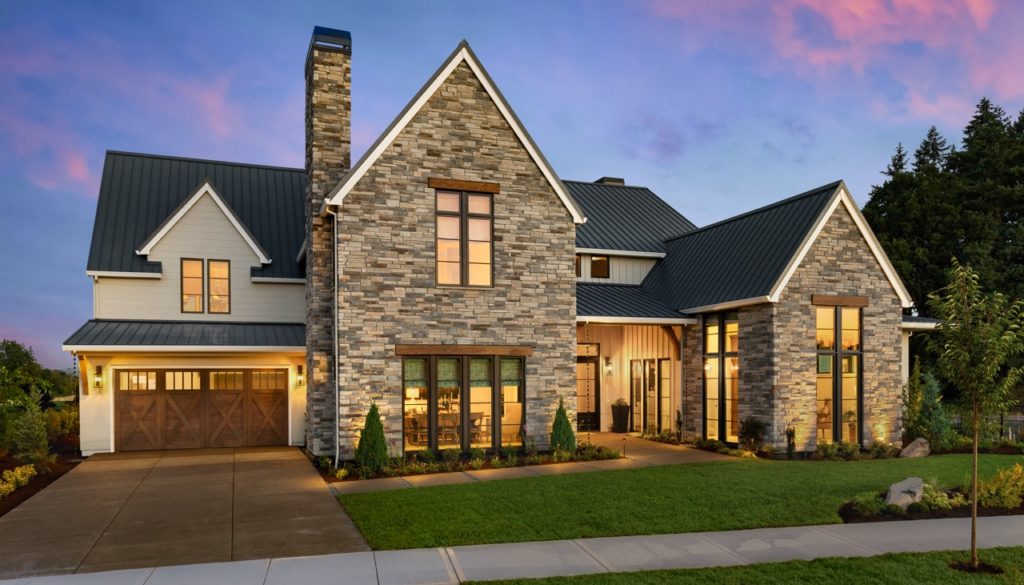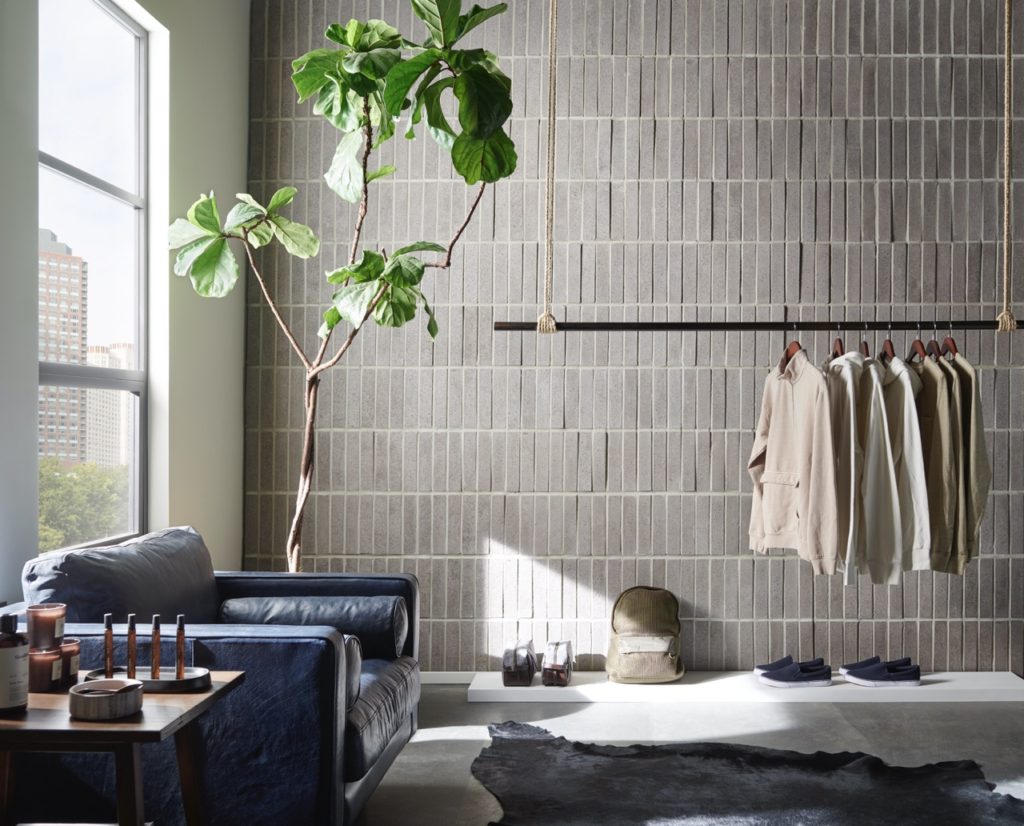The Evolution of Manufactured Stone
Words: Isa Stein
Sponsored By: Cultured Stone

As masonry professionals, we have the privilege of working with some of the most prolific building materials in the world. Societies across the globe have quarried, transported, cut and fashioned stone of every conceivable size, shape and composition imaginable. People just like you and me have toiled in the sun, wind, rain and other conditions to shape spaces for work, play and every other sort of life experience.
That’s a remarkable legacy to be a part of, and what’s even more exciting is that the masonry story is far from done. As a sustainable, resilient material with all the biophilic benefits of other natural and nature-inspired products, stone continues to evolve with time without sacrificing all of the attributes that have made it one of the world’s most enduring structural and aesthetic choices. And nothing broadens the horizon of stone’s artistic, expressive potential more than the R&D work taking place with various manufactured stone veneer producers every day of the year.
But what is manufactured stone veneer (MSV), and how did it emerge as one of our society’s most expressive options for interior and exterior spaces?
MSV Origins
The earliest forms of manufactured stone date back to ancient civilizations, where artisans attempted to replicate the appearance of natural stone using a combination of sand, lime, and other locally available materials. These early imitations were often used to supplement natural stone in construction, offering a cost-effective alternative while maintaining an authentic appearance. While these efforts fell short in terms of durability and authenticity, they set the stage for the eventual development of more sophisticated manufacturing techniques.

In addition to material changes, manufacturers also experimented with different formats for stone. This includes the introduction of natural stone “veneers” in the 19th Century, which were cut from thick slabs of natural stone. Although this enabled workers to fashion more versatile applications, these early natural stone veneer products still required special care as a result of their weight, particularly when installed in large quantities on a wall.
The early 20th Century witnessed further innovations in engineered stone. Researchers and engineers experimented with various aggregates, binders, and pigments to create more convincing imitations of different types of natural stone. As technology and materials science progressed, the manufactured stone industry underwent a transformative shift, culminating in the development of the MSV materials we’re familiar with today.
Cultured Stone: A New Chapter
In 1962, brothers Garrett and Floyd Brown of Vallejo, California recognized the need for a new kind of building material. The entrepreneurial pair of plasterers developed the first iteration of what we now broadly refer to as manufactured stone veneer: a concrete-based mixture that is cast in carefully selected natural stone molds and then hand-colored with iron oxide pigments to artfully capture the finest details from the surface of the original stone. Made of lightweight aggregate materials, the Brown brothers’ veneers were approximately one-quarter the weight of natural stone and therefore easy to adhere to most wall surfaces.
The Browns’ small, regional company began selling to dealers in Northern California, but it grew quickly and steadily by adding new products with broader geographic appeal. Within a handful of years, Cultured Stone products were distributed throughout the United States and Canada. The increase in sales eventually established the brand as the undisputed brand leader and the preferred name in the MSV category, much like the Kleenex brand dominated the facial tissue business and continues to be an interchangeable term for the entire category.
As the Browns’ take on MSV has grown in popularity for decades, it has proven to be an innovative solution that has evolved over time, transcending its initial perception as an imitation product to become a respected, sought-after and sustainable building material…and one that adds value to any space.
Curb Appeal
When it comes to getting the best return on investment for home improvements and repairs, curb appeal still reigns supreme. And that’s an area where MSV really shines. According to national data from Zonda Media’s 2023 Cost vs. Value Report, exterior renovations vastly improve resale value while typically costing just a fraction of major interior projects.
According to the report, manufactured stone veneer (MSV) ranks very highly for providing significant ROI, with 102.3% of purchase cost recouped in value following installation.
This was large enough to secure the third spot on this year’s list, yet it represents a lower upfront cost and higher return than in 2022. In fact, the resulting value of an MSV renovation ranks higher in the 2023 survey than in any of the previous seven years.
Stylistically, MSV also offers an abundance of options in terms of color, texture, format and overall application. From full-façade integrations to more intentional accents, there are more options available to installers and property owners than ever before. And all of it is available without the need to pull the materials out of the earth, which is a growing priority among buyers and business owners.

Protecting Our Surroundings
Eco-friendly construction has officially hit the mainstream, which means it’s a topic of conversation for more and more projects nationwide. According to the U.S. Green Building Council, the market share of green home building has grown exponentially over the course of the last 13 years. In 2005, environmentally friendly construction made up just two percent of the residential construction market share. By 2013, that market share had grown to 23 percent. According to Dodge Data & Analytics’ World Green Building Trends 2016, the global green building sector doubles in market share every three years. Survey respondents from 70 countries indicated 60 percent of their projects will be green by the close of 2018.
With front-of-mind concerns about the markers of climate change, homeowners as well as builders and architects have an incentive and a responsibility to engage in more eco-friendly building. After all, the U.S. Energy Information Administration reports the building sector was responsible for nearly 40 percent of all energy consumption in the U.S. in 2017.
One of the most significant aspects of the evolution of manufactured stone is its contribution to sustainability. As concerns about the depletion of natural stone resources and the environmental impact of quarrying and mining has grown over time, MSV emerged as a more sustainable alternative. By utilizing a combination of recycled materials, natural aggregates, and low-emission resins, manufacturers of MSV reduce their environmental footprint while delivering a high-quality product.
In striving to meet today’s building needs without compromising the future, the most authentic MSV products are designed to beautify spaces and also take care of our shared environment along the way.
Jobsite Efficiencies
MSV is also a great solution to some of today’s biggest jobsite concerns, including the challenge of dealing with a shortage of skilled trades in most markets, which in turn puts pressure on project timelines and billing. For example, many manufacturers offer a variety of panelized products that are designed to go up on the wall rapidly without losing any of the aesthetic appeal, thereby saving time and equipping teams to shift quickly from one space to another or even from project to project.
Using panelized stone can also help keep a project site cleaner, since the composition and arrangement of stones within each piece are already preselected by the manufacturer. This takes some of the guesswork out of the application process, which can also limit the footprint you need onsite. With less mixing and matching and little to no cutting required, these products offer a quick, straightforward and still beautiful solution for pretty much any space, including many spaces where natural stone would not be a viable option.
Sustained Excellence
The evolution of manufactured stone has provided architects and designers with unparalleled creative freedom. Its ability to replicate the look of various types of natural stone, combined with customization options in terms of color, texture, and shape, has opened new avenues for imaginative design solutions. From traditional to contemporary styles, manufactured stone effortlessly adapts to diverse architectural aesthetics, making it a modern design powerhouse. From kitchen countertops to bathroom vanities and wall cladding, MSV has found its way into a wide array of interior and exterior design projects.

Looking to the future, the evolution of manufactured stone continues as technological advances and sustainable practices become increasingly important. Researchers are exploring new materials and production methods that could further enhance the authenticity and environmental friendliness of manufactured stone materials. As the construction and design industries seek to balance aesthetics, functionality, and sustainability, MSV is poised to play an even more integral role in shaping the built environment.
As we continue to push the boundaries of what is possible, the story of manufactured stone reminds us that progress is often born from the desire to strike a balance between tradition with innovation. Stone veneer is the eco-friendly solution that allows creative expression, ties in natural elements and guarantees a return of investment during home improvements.